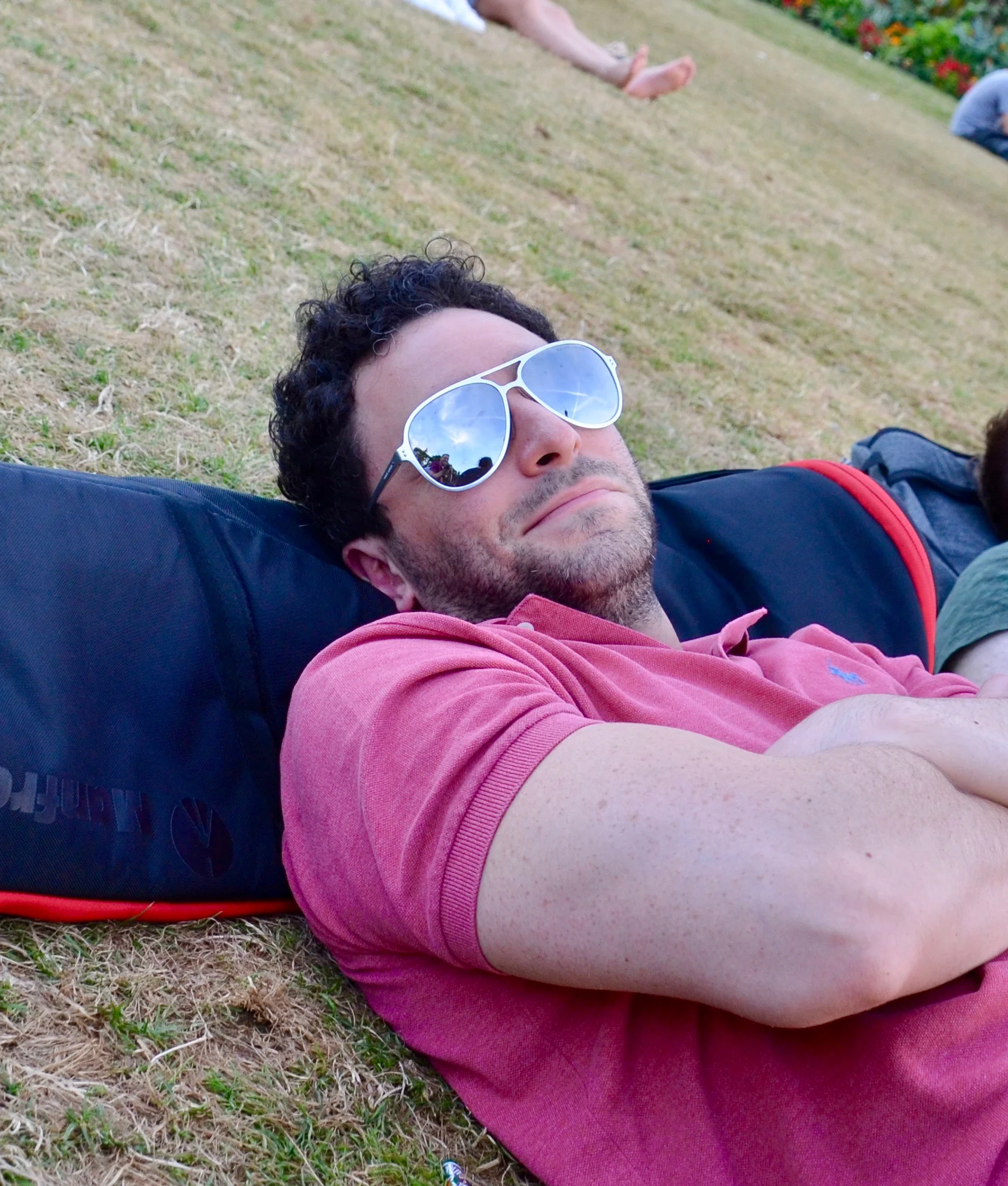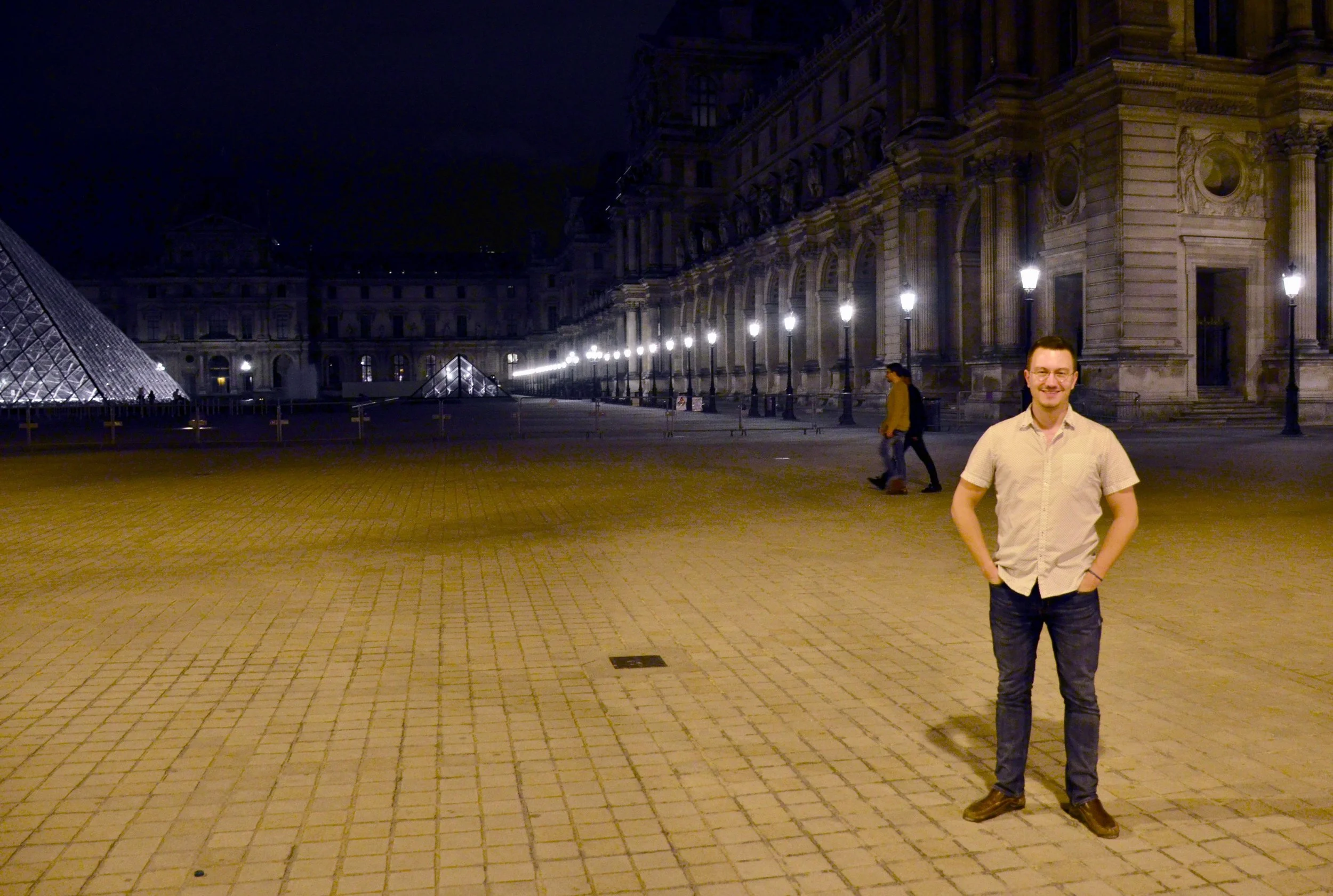Day 5: An Organ Fit for a King
by William Gardner
"We're supposed to be at Versailles at 12:30."
"What time is it now?"
"12:10."
--
This was the conversation I heard as we began our fourth day here in Paris. As jet lag and the first few long, busy days finally caught up with us, we awoke this morning a little later than planned and found ourselves behind on our travel to Versailles. As we scurried to wake the rest of the group, we quickly got ready and left for the train station in record time. We were fast on our way to today's destination: the Château and Cathedral of Versailles.
Approaching the Palace of Versailles...in a rush!
Our first stop after arriving in Versailles while waiting for our host was a Starbucks adjacent to the station. Sufficiently caffeinated and pulled together after a hectic morning, we headed off to the Château de Versailles with our gracious host, Jean-Baptiste Robin, titular organist of the Royal Chapel at the Château. We joined the throngs of people waiting in the vast courtyard and were struck by the beauty of the gold-adorned palace and famous golden gates. The entirety of the grounds encompasses over 2,000 acres, making the palace the world's largest royal domain. Home of the royal court and the seat of political power in France for over a century beginning with King Louis XIV, the Château was stunning with its gorgeous architecture, sculptures, and paintings adorning the walls and ceilings of over 2,000 rooms.
La Chapelle Royale in Versailles - an organ fit for a king!
We made our way to the Royal Chapel, consecrated in 1710 under King Louis XIV. The chapel, a center of music for the court well-known throughout the continent, featured a Corinthian colonnade and a vaulted ceiling with gorgeous artwork by three French artists depicting the Holy Trinity. The original organ in the chapel was constructed by Robert Cliquot in 1710 and featured four manuals, pedal board, and 37 stops, and is housed in an impressive, gold-adorned case; the current instrument is a reconstruction by Boisseau et Cattiaux. After an introduction to the instrument by our host, we performed a number of period-appropriate pieces by French classical composers such as Daquin, Marchand, de Grigny, and Guilain.
Jean-Pierre Millioud speaks to the Boston Organ Studio about the Choir Organ at the Cathédrale of Saint Louis in Versailles.
Once finished at the Royal Chapel, we made our way to the historic Cathedral St. Louis where we were met by titular organist Jean-Pierre Millioud, who has been an organist at the Cathedral for 45 years. The beautiful baroque Cathedral was ordered by King Louis XV and built between 1743 and 1754. The organ, constructed by François-Henri Clicquot, was completed in 1761 and consists of three manuals, pedal board, and 45 stops. Though the Cathedral took a strong stance against the Royal court at the beginning of the French Revolution, eventually leading to the cessation of Catholic worship, the Great Organ survived the Revolution with minimal damage (only the removal of three fleurs-de-lis from the case). We again performed a number of French works coached by both Jean-Baptiste Robin and Jean-Pierre Millioud.
Boston Organ Studio members, Jean-Pierre Millioud, and Jean-Baptiste Robin in front of the Grand Cavaillé-Coll Organ at the Cathédrale of Saint Louis in Versailles.
After our time at the Cathedral, we walked to a nearby café and bought food for our first official meal of the day around 6:30 p.m. We returned to enjoy our food on the steps of the Cathedral while we relaxed, conversed, and fed the birds in the courtyard. Finally finished with our organ visits and a very rushed day, we took the moment to pause and enjoy our surroundings in the city. After a short walk, we made our way back to the train station for our return trip to Paris.
As we got off the train in Paris, we made our way to the city's most iconic landmark, the Eiffel Tower. Now up close to the monument, I was struck by the industrial, wrought iron design, and I further understood why its design could have been so controversial initially after its construction. Commissioned for the 1889 World's Fair and the world's tallest man-made structure at the time, the Tower was initially supposed to be a temporary installment. However, it was a huge success from the very beginning at the World's Fair and was useful as a telegraph transmitter, so the City of Paris decided not to dismantle it. Today the tower is one of the most-visited monuments in the world, with millions of visitors each year.
The Boston Organ Studio enjoying a night at the Eiffel Tower!
As we sat in the park adjacent to the tower, a few of us went off to the grocery store to buy food. We then had a nice picnic of sandwiches and wine as the sun set and watched the tower become illuminated with a light show on the hour. After a couple hours enjoying the evening with countless other visitors, we finally returned to our apartment in Le Marais. The night ended with conversation over wine, and as the night dragged on some went off to bed while others departed to watch a movie together. We ended a packed and hurried day ready for tomorrow's adventure to Rozay-en-Brie.





























































